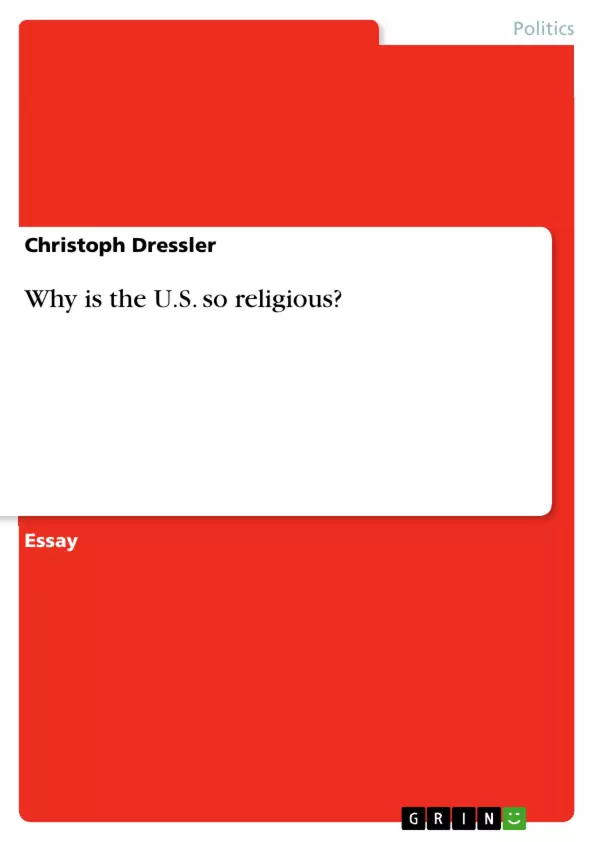Summarizing, why the U.S. is so religious, it becomes clear that only one argument can not explain American religiousness today at a whole. America was founded by religious refugees and of course this has an impact on American culture today. Moreover America took a different way into modernity than Europe. As David Martin describes, European society was the first one who entered modernity. But of the cost of an alienation of church and religion on one side and society on the other side. State and religion also never became opponents and today one is considered to be a patriot, being religious.
The American civil religion is probably the strongest argument, why America is so religious today and the competiveness of American churches explains the vital religious practice in the U.S. today.
All in all it’s the combination of these arguments that makes clear, why America is so religious today.
Inhaltsverzeichnis (Table of Contents)
- What is religion
- The U.S.- a religious country
- Impact of the religious founding fathers on American religion today
- A wall of separation between church and state
- Patriotism and religiousness in the U.S.
- American civil religion
- Entrepreneurial churches
- Religion and identity
- Summary
Zielsetzung und Themenschwerpunkte (Objectives and Key Themes)
This essay aims to explore the historical and cultural factors that contribute to the high level of religiosity in the United States, comparing and contrasting it with the religious landscape of Europe. The essay examines the influence of religious founding fathers, the separation of church and state, the role of religion in national identity, and the development of entrepreneurial churches.
- The historical roots of American religiosity
- The role of religious practice in American society
- The relationship between religion and national identity
- The unique characteristics of American religious institutions
- The influence of historical events on contemporary religious life
Zusammenfassung der Kapitel (Chapter Summaries)
- The first chapter defines the term "religion" and explores various perspectives on its meaning, drawing on definitions from scholars like Clifford Geertz, Ludwig Feuerbach, and Émile Durkheim.
- The second chapter delves into the question of whether the United States is a religious country, examining both religious belief and practice. It cites statistics on religious affiliation and church attendance in the United States and compares these to similar data from Europe.
- The third chapter examines the impact of religious founding fathers on contemporary American religion, tracing the influence of the Pilgrims and their exodus from Europe. The chapter highlights the significance of religious freedom and the influence of religious minorities in the early development of the United States.
Schlüsselwörter (Keywords)
This essay focuses on the key concepts of religion, religious belief, religious practice, American history, religious founding fathers, separation of church and state, national identity, entrepreneurial churches, and comparative analysis of religious trends in the United States and Europe. It explores the relationship between religion and society in a historical and cultural context.
- Quote paper
- Christoph Dressler (Author), 2008, Why is the U.S. so religious?, Munich, GRIN Verlag, https://www.grin.com/document/167051



